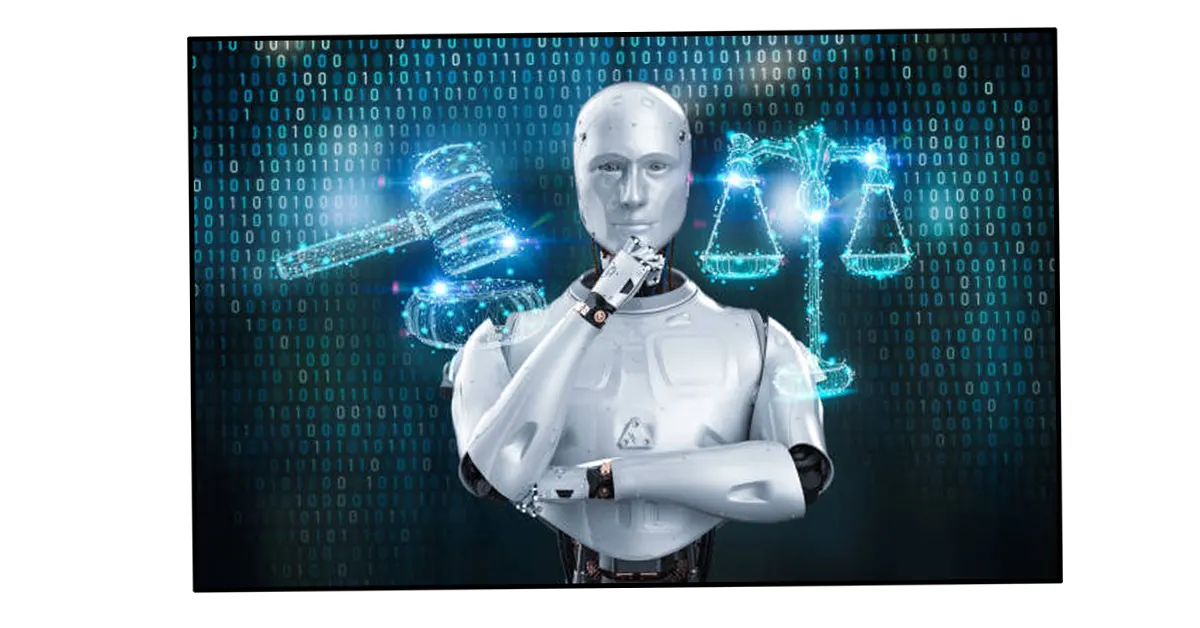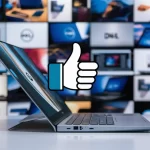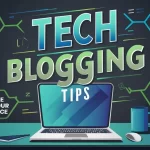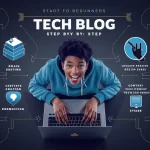AI-generated images are created using algorithms and machine learning techniques, allowing computers to generate realistic and high-quality images. This technology has the potential to revolutionize the creative industry, but it also raises important legal questions about ownership and copyright.
Table of Contents
Key Takeaways
- AI-generated images are becoming popular in various industries.
- Machine learning and algorithms are used to make AI-generated pictures..
- Copyright law applies to AI-generated images, but ownership and protection can be complex.
- The copyright of AI-generated images may belong to the creator, the user, or the AI itself.
- Legal precedents and best practices can help navigate the challenges of copyrighting AI-generated images.
What are AI-generated images?
Images produced by machine learning and artificial intelligence algorithms are referred to as AI-generated . These algorithms analyze vast amounts of data and learn patterns and styles from existing images. They can then generate new images based on this learned information.
There are different methods used to create AI-images, including generative adversarial networks (GANs) and deep learning techniques. GANs consist of two neural networks: a generator network that creates new images, and a discriminator network that evaluates the generated images for authenticity. Through an iterative process, the generator network learns to create realistic images.
Examples of AI-generated include realistic portraits of people who do not exist, landscapes, animals, and even abstract art. These images can be indistinguishable from those created by human artists, making it difficult to determine their origin.
Copyright Law Basics: Understanding Ownership and Protection
A legal system known as copyright law gives authors of original works exclusive rights. It protects various forms of creative expression, including literary works, music, art, and photographs. Copyright law gives creators the right to control how their works are used and distributed.
Ownership of a creative work is granted to the creator upon its creation. But, copyright protection is not absolute and has limitations. For example, copyright does not protect ideas or concepts but rather the expression of those ideas.
Copyright protection is automatic upon creation, meaning that registration is not required for copyright to exist. But, registering a copyright with the appropriate government agency provides more benefits, such as the ability to sue for copyright infringement and the presumption of ownership.
Can AI-generated images be copyrighted?
The question of whether generated images can be copyrighted is a subject of debate. Original works written by people are protected by copyright law. But, AI-images are created by algorithms and do not have a human author in the traditional sense.
Some argue that AI-generated content should not be eligible for copyright protection because it lacks human creativity and authorship. They argue that copyright law should only protect works that involve human input and creative decision-making.
, proponents of copyright protection for AI-generated argue that these images are the result of human creativity in designing and training the AI algorithms. They believe that copyright law should adapt to recognize the role of AI in the creative process.
Who Owns the Copyright to AI-Generated Images?
Determining ownership of AI-generated images is another complex issue. In traditional copyright law, ownership is granted to the creator of the work. But, in the case of AI-generated content, it is not clear who should be considered the creator.
Some argue that ownership should be granted to the person or entity that designed and trained the AI algorithm used to generate the images. They believe that this person or entity should be considered the author of the work since they provided the creative input in creating the algorithm.
Others argue that ownership should be granted to the person or entity that owns or controls the AI algorithm. They believe that this person or entity should be considered the author since they have control over the creative output of the algorithm.
The question of ownership becomes even more complicated when many individuals or entities are involved in creating and training the AI algorithm. In these cases, it may be necessary to establish clear agreements and contracts to determine ownership rights.
Legal Precedents: Landmark Cases Involving AI-Generated Images
There have been several notable legal cases involving AI-generated content that have had an impact on copyright law. One such case is the “Monkey Selfie” case, which involved a photograph taken by a macaque monkey using a camera owned by a wildlife photographer. The question in this case was whether the monkey or the photographer owned the copyright to the photograph.
In 2018, the United States Copyright Office issued a statement clarifying that it would not register works created by animals or machines. This statement suggests that AI-generated content may not be eligible for copyright protection under current copyright law.
Another landmark case is the “Portrait of Edmond de Belamy” case, which involved an AI-generated artwork sold at auction for over $400,000. The question in this case was whether the artwork could be considered an original work of art and eligible for copyright protection.
The court ultimately ruled that the artwork could be considered an original work of art and eligible for copyright protection. This ruling recognized the creative input of the human artist who trained the AI algorithm and made decisions regarding the final artwork.
These cases highlight the ongoing legal debate surrounding AI-images and their eligibility for copyright protection.
Challenges in Copyrighting AI-Generated Images
Copyrighting AI-generated images presents several challenges. One of the main challenges is determining ownership and authorship. Unlike traditional creative works, AI-generated images do not have a clear human author. This makes it difficult to determine who should be granted copyright ownership.
Another challenge is enforcing copyright laws for AI-
images. With the ease of digital reproduction and distribution, it can be challenging to check and control the use of AI-generated images. Copyright infringement can occur on a massive scale, making it difficult for creators to protect their rights.
Additionally, there is a lack of legal precedent and clear guidelines about copyright protection for AI-generated content. As technology continues to advance, lawmakers and legal experts must address these challenges and provide clarity on the legal status of AI-generated images.
Best Practices: Protecting Your AI-Generated Images
While the legal landscape surrounding AI-generated images is still evolving, there are several best practices that creators can follow to protect their works. These include:
1. Copyright Registration: Although copyright protection is automatic, registering your copyright with the appropriate government agency provides more benefits. It establishes a public record of your ownership and allows you to sue for copyright infringement.
2. Licensing Agreements: Creating licensing agreements can help you control how your AI-generated images are used and distributed. These agreements can outline the terms and conditions for using your images, including restrictions on commercial use or modifications.
3. Watermarking and Metadata: Adding watermarks or metadata to your AI-generated can help deter unauthorized use and provide a way to identify the original creator. This is especially helpful in situations when there is copyright violation.
4. Monitoring and Enforcement: monitoring the use of your AI-images online can help you identify instances of copyright infringement. If you discover unauthorized use, taking appropriate legal action can help enforce your rights.
The Future of AI-Generated Images and Copyright Law
The rise of AI-generated images raises important questions about the future of copyright law. As AI technology continues to advance, it is likely that more complex and sophisticated AI algorithms will be developed, capable of creating even more realistic and creative images.
This raises the question of whether AI-generated images should be granted the same level of copyright protection as works created by human authors. It also raises questions about the role of human input in the creative process and how it should be recognized in copyright law.
The future of copyright law will likely involve ongoing discussions and debates surrounding these issues. Lawmakers, legal experts, and creators must engage in these discussions to ensure that copyright law adapts to the changing landscape of AI-generated images.
Navigating the Legal Landscape of AI-Generated Images
The rise of AI-generated images presents both exciting opportunities and complex legal challenges. As AI technology continues to advance, creators, lawmakers, and legal experts must navigate the legal landscape surrounding AI-
images.
Understanding the basics of copyright law, including ownership and protection, is essential for creators seeking to protect their AI-generated images. While the legal status of AI-generated content is still evolving, following best practices such as copyright registration and licensing agreements can help creators protect their rights.
The future of AI-generated images and copyright law will must ongoing education and discussion. Creators and legal professionals need to stay informed about the latest developments in AI technology and copyright law to ensure that the rights of creators are protected in this changing landscape.
If you’re interested in the topic of AI-generated images and copyright, you may also want to check out this article on Blogging Analysis: Are AI-Images Copyrighted? This article delves into the legal aspects surrounding the ownership and copyright of images created by artificial intelligence. It provides insights into the current state of copyright laws and how they apply to AI-generated content.
FAQs
What are AI-generated images?
Images produced by machine learning and artificial intelligence algorithms are referred to as AI-generated images. These images are not created by humans but are generated by computers using complex algorithms.
Can AI-generated images be copyrighted?
Yes, AI-generated images can be copyrighted. The copyright for an AI-generated image belongs to the person or entity that created the algorithm or program that generated the image.
Who owns the copyright for AI-generated images?
The copyright for AI-generated images belongs to the person or entity that created the algorithm or program that generated the image. In some cases, the copyright may belong to the person or entity that commissioned the creation of the algorithm or program.
Can AI-generated images be used without permission?
No, AI-generated images cannot be used without permission; images may only be used, copied, and distributed by the copyright holder. Any use of an AI-generated image without permission may be considered copyright infringement.
What is fair use when it comes to AI-generated images?
Fair use is a legal doctrine that allows for the limited use of copyrighted material without permission for purposes such as criticism, comment, news reporting, teaching, scholarship, or research. Whether the use of an AI-generated image falls under fair use depends on the specific circumstances of the use.
What are the consequences of using AI-generated images without permission?
Using AI-generated images without permission may result in legal action for copyright infringement. The copyright owner may seek damages, including monetary compensation, and may also seek an injunction to prevent further use of the image.






